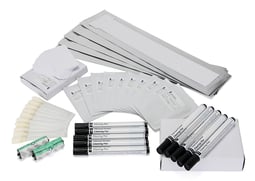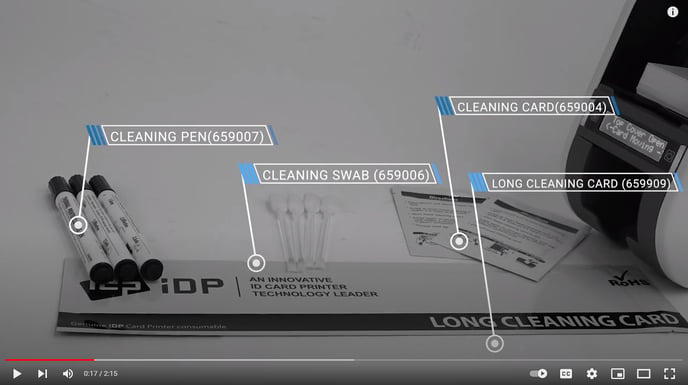How do you create a knowledge base process article correctly?
We define the top 20% of business processes with an 80% impact on productivity. A well-crafted process article delivers high-impact content quickly, producing the same results regardless of equally skilled users.
We use this article as the template for defining and publishing all articles in our Hubspot Knowledge Base.
Table of Contents
- Formatting Rules and Tips
- Accountabilities & Skills
- Define Processes
- Knowledge Base Content
- Review, Publish, & Update
- Share with All
- Assessment
- Sample
Table of Contents
TOCs give users a synopsis of the article's contents and organization. It allows readers to navigate to a specific section of an online document via hyperlink.
We suggest using TOCs when an article is broken up into sections. After completing the article, individually highlight each header, then select the Anchor button from the Insert drop-down in the taskbar. Repeat for each header.
- At the top of the article, list each headline as a bullet in sequential order.
- Then highlight each title and select the Insert Link icon,
- Then change the Link To field to Anchor on this Page, and choose the associated anchor.
Formatting Rules and Tips
Before we provide content development guidance, let's review some housekeeping rules and tips!
Select a Relevant Topic
It is suggested to start with defined lists of accountabilities. Select one where documentation exists, possibly in several forms that can be condensed and updated. Otherwise, you'll need to start from scratch by observing, documenting, testing, and updating using this article as a guide.
Create an Article Title and Opening Paragraph
Create the title using key relevant words in question form. Think about what question your article is answering. Think like the reader, and create a question that gets to the root of the article. The opening paragraph quickly tells the reader what they will read in a few short sentences.
Headers and Sections
Start by defining all processes and placing them in order of completion. The goal is to keep instructions as simple as possible by defining the critical steps in a hierarchical series. When creating the section content, assume the reader understands 80% of what is needed to complete the process. Just like a recipe is written, there is a list of ingredients you'll need to have before you start and the skills required to complete the task.
- IMPORTANT READ! A chocolate mouse recipe includes one pint of whipped cream. However, the instructions do not include making whipped cream with stiff peaks. It's a straightforward instruction. The author assumes the reader knows what type of cream to use: requiring a cold bowl, knowing what a whisk is and how to use it, and testing if the peaks are stiff or soft.
The defined section headers are a list of critical steps that outline the processes, and the section content provides the details to complete the process. The headers become the Table of Contents, and the content is the how-to.
Images and Videos
A picture is worth a thousand words!
- Find supporting images and include them in your article.
- Create simple graphics in MS Paint or your favorite design tool
- Images must be either proprietary to the company or licensed free, and if purchased they must be well documented and approved for use.
Videos are great if done correctly and professionally.
- Inserting a hyperlink within text or an image is a great way to embed a video.
Copy and Paste
- Never copy and paste directly from anything besides Notepad or Paste as Plan text.
- Once you have a fair amount of the article entered, select the Settings tab and fill it out correctly.
- No need to Publish, but make sure Control Audience Access in the HubSpot "Settings" tab above is assigned correctly.
Character Returns
- Before assigning text formatting, create a character return using the Enter key, so the format does not affect all text below it.
- It is recommended to place your cursor at the end of the sentence, use the Delete key to bring up lower text, then Enter/Return to continue formatting.
Accountabilities & Skills
High-level Outline
These are your What's...what you do! Accountabilities are a listing of high-level critical business functions. Narrowing them down to only a few allows quicker training and better assessment. Adding some skills prerequisites provides a filter so only those who meet them should qualify. Do not state every skill required to complete the topic. Use the 20% relevant and impactful skills rule that assumes the user knows 80% of the relevant processes.
- Accountabilities are reviewed and revised as needed, at least, annually
- List the top three to five critical responsibilities required to complete the article's topic correctly and timely.
Define Processes
Process Outlines of Accountabilities
Processes must be outlined for each Accountability, creating a further breakdown of responsibilities. This step may be completed after creating the knowledgebase content and then placed hierarchically. These are the "can you do this" checklist tasks.
- Start by selecting an Accountability.
- They should be SMART: Specific, Measurable, Achievable, Relevant, and Time-Bound.
Knowledge Base Content
Impactful Content Chucks of How-Tos
Using the Defined Processes as the steps, now use existing content, new observation documentation, and discussion feedback to draft chunks of relevant and impactful content the user can easily follow to produce the expected outcome. These are the how-tos of the Process Ouline needed to fulfill defined job accountabilities.
- Defined using a simplified step-by-step process that will meet the defined responsibilities assessment metric
- Create a Table of Contents for articles with multiple Headers so the Anchored links can be used as a direct reference.
Review, Publish, & Update
Subject Matter Expert Approved!
The article's publisher will likely not be the content's source author, which may include more than one expert. Before sending it for review, read the article several times, at different times, and read it as if you are the reader. "Does it clearly make sense?" This is the first filter it must pass before you send it off for proofing and approval.
Remember, when building the article, it must be in the exact same form/system it will reside in, requiring no additional reformatting before sending it for approval. Edit as directed, then publish it for all to see!
Content is never static, and over time, it will require updating. Ensure each article is date-stamped with a last edit date to easily filter, review, and update old articles when needed.
Share with All
Easily Found for all to See!
Ideally, you have a communication tool that identifies article recipients logically. This can be as simple as Email and Team groups or a more complex learning management system LMS communication tool. Send emails and notifications as articles are published, reminders of using your knowledge base first as a resource, not Google.
Making the article quickly found is as simple as increasing its searchability with relevant embedded Keywords.
Identify your managers and trainers, and communicate regularly to promote these impactful training and onboarding tools.
Once published, it is critical to have a process that prompts article review, ensuring relevancy and accuracy.
Assessment
Successful Performance Assessment
This should not be too complex. Create some simple questions that either leadership or self-assessment should provide the understanding that the processes are being performed to the set standards in the defined Accountabilities above.
- How do you determine if a user is meeting the accountabilities of the article?
Sample Article:
How do you clean a PVC ID card printer?

Table of Contents
- Accountabilities & Skills
- Process and Tools Needed
- Scheduling and Planning
- Follow the Printer Manual Instructions
- The Outcome of a Properly Cleaned Printer
- Cleaning Process Assessment
- IDP Smart 51 Cleaning Video
PVC card printers will gather debris internally after printing hundreds of cards. Each printer must be cleaned regularly to optimize printer life and card print quality. Some printers will prompt for cleaning, and some may require cleaning before card printing can be continued. Ensure you have all the cleaning supplies on hand and on time to ensure zero delays when the printer prompts for cleaning. (Opening Pgh)
Accountabilities & Skills:
- Keep the ID card printer clean, on a defined schedule
- Install and remove printer ribbons, film, and laminate as they apply
- Ability to understand, follow, and learn the technical processes stated in the user manual.
Process and Tools Needed
- Are you investing the scheduled time to clean the printer twice a month?
- Do you have access to the printer user manual?
- Do you have a basic understanding of operating the printer?
- Are you maintaining a sufficient inventory of cleaning supplies?
Scheduling and Planning
- Always ensure there are enough cleaning supplies in inventory.
- Depending on your office's print volume, determine a regular cleaning cycle.
- If you have multiple printers, clean them all regardless of print count per each.
- Book a Printer Cleaning calendar event as a reminder.
Follow Printer Manual Instructions
- First, pay attention to the inside of the printer when cleaning, as you may want to use canned air to remove loose debris before using the cleaning products.
- Follow the steps and instructions in your printer manual to clean the printer.
The Outcome of a Properly Cleaned Printer
- Now your cards should be printed mostly debris-free and showing minuscule spots in printed areas.
Cleaning Process Assessment
- Do you know how to clean the ID card printer?
- Has the card printer been cleaned in the last six months?
IDP Smart 51 Cleaning Video
Back to Top
Live Printer Cleaning Article

